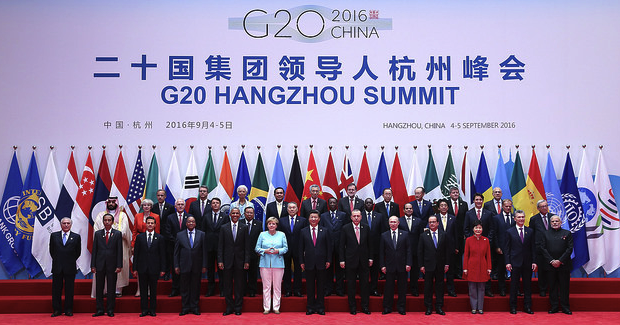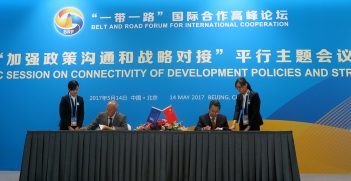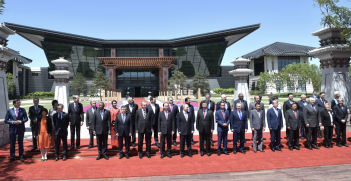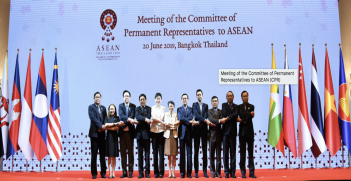G20: Multilateralism After China

China’s emergence as an economic superpower has given rise to an alternative form of multilateralism.
The year 2018 marks the 40th anniversary of the beginning of reform and opening in China. Over these last four decades China has progressively and quickly changed. Together with its economic growth we have witnessed a reshaping of its role in the world, becoming more assertive and more involved in multilateral issues. I like to refer to this as a new type of globalisation, a globalisation “with Chinese characteristics”. There is a turning point in multilateralism BC or AC: before or after China´s emergence into the centre stage. In addition to this, the withdrawal of countries such as the United States from multilateral forums, together with less favourable discourse on the benefits of globalisation, has propelled China onto the centre stage of world economic policy.
At first, China’s dramatic growth had only a purely economic impact on the rest of the world, as it moved from a low-key actor in terms of trade and economic importance in the world to currently the second – and probably soon the largest – economy and main trading partner of many countries in the world. In the last four decades China lifted 800 million people out of poverty, turned a rural country into an urban one (from 18 to 58 percent urban population), created a huge middle class of 300 million and now has 800 million internet users, more than the US and the EU combined. From a mainly rural and backward economy at the end of the 1970s, it is currently a leader in e-commerce. A clear example of this transformation is its annual Singles’ Day, which in 2018 generated a record USD 30 billion in online sales in only 24 hours, mostly through mobile phones.
Following its initial impact on the global economy, China has now also become a global player and increasingly compelled to accept the accountability and responsibility this new role entails, including more commitment to global standards in environment, labour and trade and international rules and regulations. China is now a leading actor in the world and will continue to be so. However, this is taking place within multilateral institutions for multilateral cooperation and trade designed and led post World War II by the West, mainly by the United States. They are examples of multilateralism BC: Before China´s emergence into the world scene.
Since the middle of 2000 China underwent a noticeable change into a much more assertive and involved participant in international issues. The Olympic Games of 2008 showcased China as a country at the world’s centre stage. After the arrival of Xi Jinping to the presidency in 2012 this new role became even more evident. The Hangzhou G20 Summit in 2016 embodied this new China: more assertive and involved in the international community under the theme “Towards an innovative, invigorated, interconnected and inclusive global economy”. The declaration, known as the Hangzhou Agreement, proposed that the G20 should transform from being a crisis response forum to an instrument for the world’s economic development through scientific and technological innovation and a more open, less protectionist world economy, by reinforcing the multilateral trading system.
Since then, China has, adopted a dual approach. On the one hand it has not broken with traditional Western institutions. In fact, China has actively and proactively participated within the World Trade Organisation, the United Nations and the Paris Agreement on climate change. China has become the main advocate of globalisation and inclusive and sustainable development. On the other hand, China is – with its still developing country credentials – proposing an alternative and complementary new world order, with new institutions and strategies which characterise a new globalisation, a globalisation led from the South with Chinese characteristics: multilateralism AC.
China´s flagship project, the Belt and Road Initiative (BRI) – together with the Asian Infrastructure Investment Bank (AIIB) – embodies this new type of globalisation as it is designed to include all other pre-existing initiatives and institutions. In fact, it is a framework under which this new globalisation takes place. An example of this are the UN Sustainable Development Goals (SDGs), which are included within the main objectives proposed by the BRI. UN Secretary General Antonio Guterres at the BRI Forum in May 2017 in Beijing referred to China as a “pillar of multilateralism” and compared the BRI with the objectives of sustainable development, highlighting the shared vision of global development and connectivity in both, as well as the need to strengthen the links between the BRI and the objectives of sustainable development.
At a time when many countries retreat from globalisation, China has been very vocal in its support of market liberalisation and free trade with cooperation and multilateralism at the core of its discourse. In early November 2018, at the opening ceremony of the China International Import Expo in Shanghai, President Xi Jinping made a speech in which he said China will continue to push for multilateral and bilateral cooperation in pursuit of development.
China has therefore become a provider of an alternative way of interpreting cooperation, multilateralism and development. And rather than conflicting with existing multilateral institutions, this alternative complements them. With this new-found assertiveness, China is willing and able to continue promoting trade, cooperation and multilateralism with the underpinning of the Belt and Road Initiative. The question is whether the West is ready to handle this more assertive China and the new model of multilateral cooperation it proposes.
Dr Carola Ramon-Berjano holds a PhD in Economics from ILAS at the University of London. She is a Counsellor Member of the Argentine Council for International Relations (CARI), Deputy Chair of the China Working Group and a Member of both the Asian Affairs and the Latin American Committees at CARI. In 2018 she was the T20 Deputy Director of Policy and Research at CARI. The views expressed here are those of the author and do not necessarily represent or reflect the views of CARI.
This article is published under a Creative Commons Licence and may be republished with attribution.





